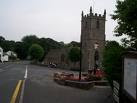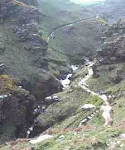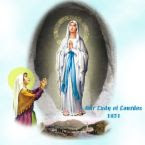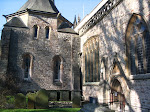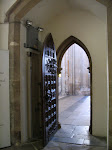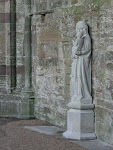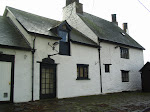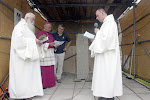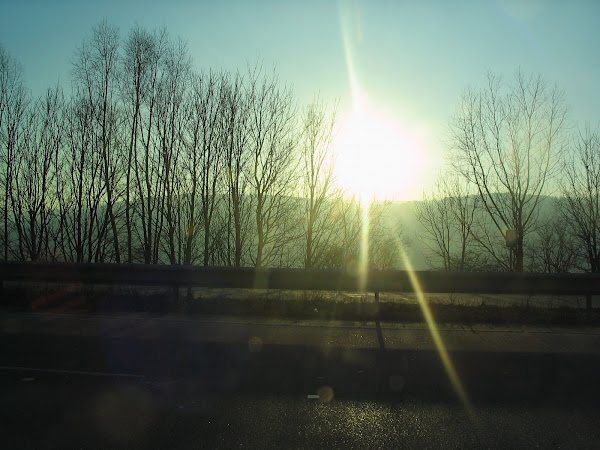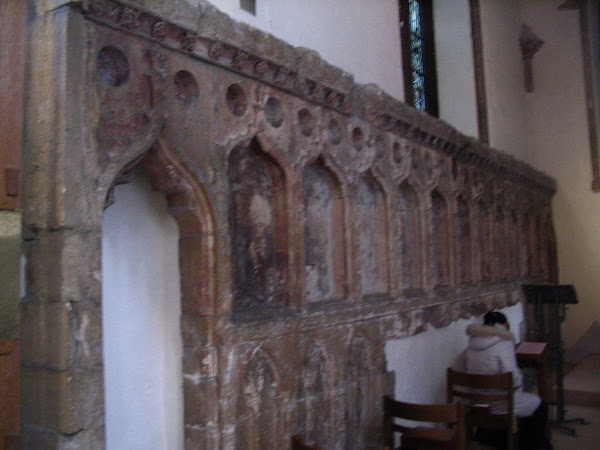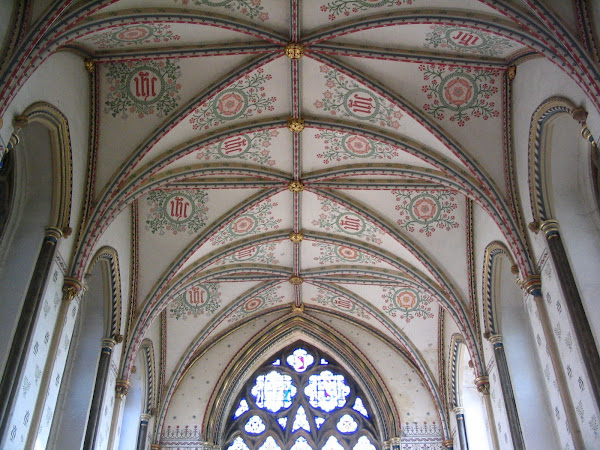Yesterday I talked about the 'popish practices' claimed by Protestants of the Faithful after the Reformation, watching Catholics gathering together at Holy Sites in God's Creation-Holy wells, Holy Mountains and Shrines. You are led to believe their devotion is 'mumbo jumbo or magic spells', but they are actually straightforward the Catholic devotions we know today. We have not cut 'cut off ' the life of the spirit, God and Christ from our worship, because we still live in God and the spirit. This second post is concerning these 'popish' devotions we still have as sacred today.
Of course in the 'stations' described as sacred places where the penitents would pray, there would be other things-Easter Sepulchres in Churches or even crawling under the saints' altar
The Mass is for Christians the source and summit of their Christian Faith. It kept the people together, even when they outwardly performed what they needed to to escape the terrible fines and attended the local parish church , not taking the Communion offered there. The Mass, the same as today, consists of the Liturgy of the Word (Biblical readings and teaching from the OT, The Psalms, the Epistle and the Gospel for which the people all turn to the readers and the preacher signing the cross on the foerehead (God be in my Head and in my Understanding) on the lips (God be on my mouth and on my speaking) and on the heart (God be in my heart and in my thinking).This is in respect of the Words of the Gospel. The glory of the Word of the Lord is welcomed by the people who acclaim 'Alleliua! three times, at the end of the reading and the three fold Alleluia is the Homily, the teaching. The priest surrenders his voice to that of Christ to tie together the readings and psalms. The people rise and sing the beliefs of the Christians present in the Nicean Creed. Jesus shares fully in the Divinity of the Father-'God from God, Light from Light, True God from True God, begotten not made, consubstantial with the Father) Those who profess the one God, are standing firmly against idolatry ancient or modern) There follow the prayers to God...the Faithful call out 'Christe Audi nos'-Lord hear us and the response 'Lord graciously hear us'. The prayers are for the living and the dead saints of the Church and then the first part of the Mass-the Liturgy of the Word-where God speaks to us finishes.
The wine and bread and water which will become Christ's body are offered to the altar with a hymn. Bread and Wine are 'Wheat and Vine' and this implies Earth, Fire,Water Air Soil Wind and Sunshine-indeed the Cosmos itself. The small gifts are therefore representative of the Creation of the God of the Universe. There follows the Liturgy of the Eucharist.(Thanksgiving in English)In songs and responses we speak to him. There follows the Meal, which he himself prepares for us, the High Priest and the victim draws us to himself.In a world gone wrong, there is no intimacy without sacrifice, because sin has twisted us out of shape and so intimacy with God will mean a painful 'twisting back' -a sacrifice. In an animal sacrifice someone took one small aspect of God's creation and returned it to its source as an act of gratitude for the gift of his own existence. God has no need of these sacrifices - He does not need anything at all, but we need sacrifices (He knows our need)in order to reorder things with us and restore union with God , What is given back to God and sacrificed to Him breaks against the rock of Divine Self Sufficiency and returns for the benefit of the one who has made the Offering. Sacrifice produces Communion.
This is the distinctive meaning under the Liturgy of the Eucharist. All the angels and saints are called to be present.The Priest then begins the process of confecting the Communion as the Faithful sing the beatiful words of Isaiah 6: 'Holy Holy Holy Lord God of Sabaoth. Heaven and Earth are full of your glory! Hosanna in the Highest! and our Christian addition 'Blessed is He , who comes in the Name of the Lord'. Hosanna in the Highest. The people join themselves with the Angels and Saints .There follows the Eucharistic Prayer and the priest speaks the words of Jesus over the gifts and they become-as the Faithful stand there asks God to send down the Holy Spirit and transform the Bread and the Wine. The very words of Jesus are spoken: 'This is my Body', This is the Chalice of the new and Everlasting Covenant-the bread and wine are transformed into the body and blood of the Lord. -the whole Church organism around the world, sing AMEN with the angels and saints in heaven, and Christ becomes present in the Eucharist and every Communicant is fed by Him, who will be with us till the end of time. The Body of Christ is present actually on the altar. (Unless you eat (troge-gnawing in Greek) my Body and drink my blood you will have no life in you-St John Ch 6 v 53-58)
The vessels used in the feast are then cleaned while the Faithful enjoy their encounter with the Lord and finally the priest takes his leave from his people 'The Mass is Ended' ,'Go in Peace!' and the priest and deacons, altar servers, and others process out.People remain to pray, 'talk' to the saints or ask Our Lady for her prayers to her Son for something, and there is usually a gathering for refreshments and chat. What appears to be Bread and Wine have changed in its reality.God's work effects what it says: whether 'Let there be Light' or 'This is my Body'. What Jesus says -is.
Benediction usually follows thr Rosary, and is a thanksgiving for the Eucharist, which is placed in a beautifully decorated monstrance and with the consecrated Host (Sacrifice) inside, the people are blessed . The Tantum Ergo and O Salutaris Hostia , two beautiful ancient hymns are sung.
The Rosary (sometimes called Mary's Psalter in Wales) was a collection of Meditations on the life of Christ-Joyful ones Sorrowful Ones, Glorious Ones) as seen through the eyes of His earthly mother-little Mary of Nazareth.Like us, a small specimen of God's Creatures, raised by Him because of her obedience and freely given co-operation-to great things. Originally the Rosary were the 150 psalms, which could be said in turn by monks in a monastery. Ordinary non reading people had a rosary and in the time it took to say 10 Hail Mary prayers-(the address of the Angel Gabriel to Mary) the petitioner would reflect on and recall the visit of the Angel and her words to Mary-the use of the word 'Overshadowed' -his Divinity and so on. They would reflect this world had been used with reference to the Spirit of God entering the Tabernacle of David on Mt Zion in Jesusalem, where the Ark of the Covenant had been placed. All this would be contemplated. There would follow contemplations on the Visit to Elizabeth and the Magnificat, the Nativity itself and visit of the Shepherds and Wise Men, the Presentation of Jesus in the Temple to Simeon and the Finding ot the Child Jesus in the Temple. Whatever else, these were an illiterate person's prayer book and Bible and not a sheaf of 'magical mumbled prayers'.
'Stations' The devotion of the Stations of the Cross , popular across Christendom during lent had its origins in the 'stations' around the churches. The stations of the Cross follows the final walk of Jesus to the Cross in nthe local parish church rather than by actual pilgrimage to Jerusalem. Pilgrims would be there in spirit if not physically. Pilgrims in Catholic times, possibly en route to some famous pilgrimage site would often take in the Holy wells on the route and pray for strength. The Holy Well was often the last 'Station'. Other stations could be some site of special significance in the Llan or church, the memorial of the buried saint or statue, another smaller Church or chapel, a Celtic style Cross, a nun's house or Convent.Sometimes Station 1 would be the altar of the Church, Station 2 perhaps a small cairn of stones, and more stones would be deposited on it as a sumbol of the sorrow for sin. In Ireland there were often the 'grave beds' (there was one at Bassaleg Priory in the Middle Ages, dedicated to St Gwladys of Newport, wife of St Gwynlliw who was buried there'.Each community would work out its hallowed stations where prayers would be said and generally, the Our Father was said reverentially five times, the Hail Mary prayer also five times and the Nicean or Apostolic Creed (mentioned above) (This is about half a decade of the rosary for each station-although the Crees was only said once, usually before moving off) The Faithful would trace out the circle around these stations, and finally the well would be reached and would be also walked around ,and water drunk, cures implored, penance completed etc.They would kneel to pray after walking once around the 'station', whatever it was.
Pilgrimages
Such a pilgrimage also took place at Good Friday in some places and certainly on the Patronal Festival or 'Pattern' of the saints. There was often feasting and -in some lamentable occasions because of over indulgence of alcohol-fights.Some people felt every 'Pattern' had to have a fight and indeed at Welsh Weddings, this often appeared to be the case! This was not ideal. Unfortunately there are problems with popular piety and the twentieth century views of these things:
a)Abuse of the Holy Wells by superstitions and by pagans, witches and other such beliefs, which came out of the closet, and in large part re-invented rites with no ancient significance.Many clergy, Carroll believe actively discouraged the worship of the Trinity at Holy Wells during the late 19th and 20th centuries-as witness the number of holy wells fallen into disuse.They said less Masses there and also led less pilgrimages around stations.
b) More faith in scientific remedies than in the water cures which are reserved for the illnesses science has problems with.
c)Loss of faith because of bad catechesis-family breakdowns and loss of identity of some Catholic parishes displaced by other incoming faiths.
d) No teaching of local history in schools or even of the lives of the very saints who have given their names to the dedication of their church being given. Protestant insistance and criticism of statues and Communion of Saints making this unfashionable
e) Children addicted to the virtual computers, iphones, iPads etc. They have a feeling of being invincible with all these tinsels of the world. Children isolated ,in some cases, having no 'real' friends just virtual ones.When the real world crashes in, there is no fall back position, especially if the family is not strong.
Whilst The Mass itself connects us with the Triune God, I believe that local worship around the church (in an age rapidly becoming less analytical, and with less fluent readers for a long time) could benefit the young by reenforcing what the Mass is, as well as informing the Faithful about the life lived in God of their forgotten saint. It could breathe new life into penance and the patronal festival and make all of us more grateful for all the gifts and blessings of our creation in life giving springs and the 'real things of the earth in God's Creation''in which we are grown, whilst looking heavenward for our future. I would like to see parishes taking Children-especially out of urban areas for enjoyable days of contemplation and fun and doing some of these rounds and discussions of some of these things. They are the Real Gifts and Blessings of God's Creation not fake ones .



















